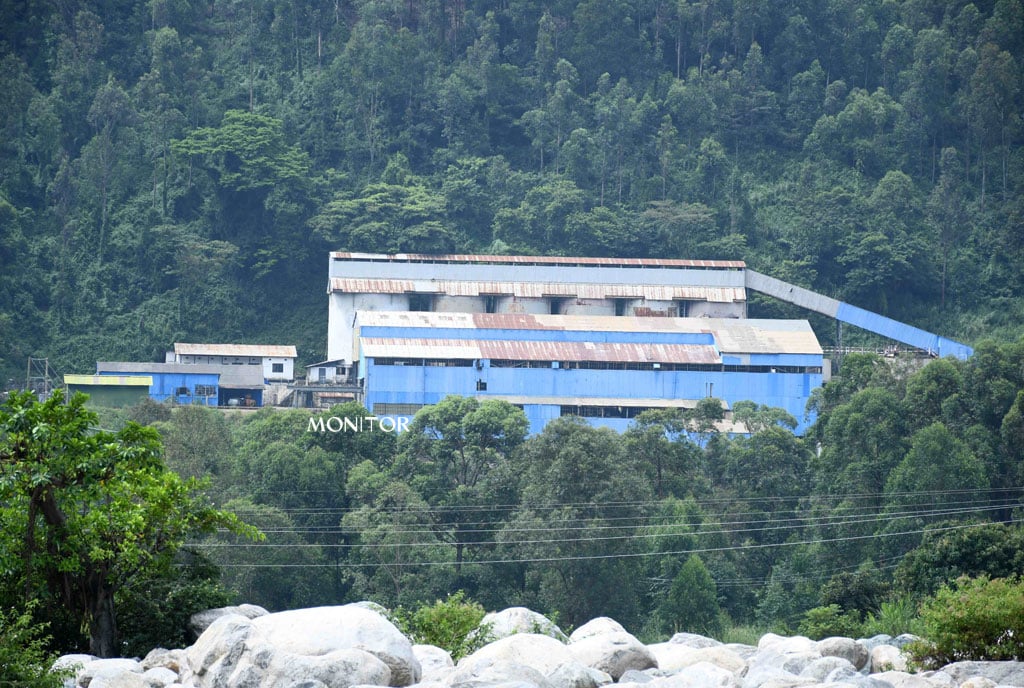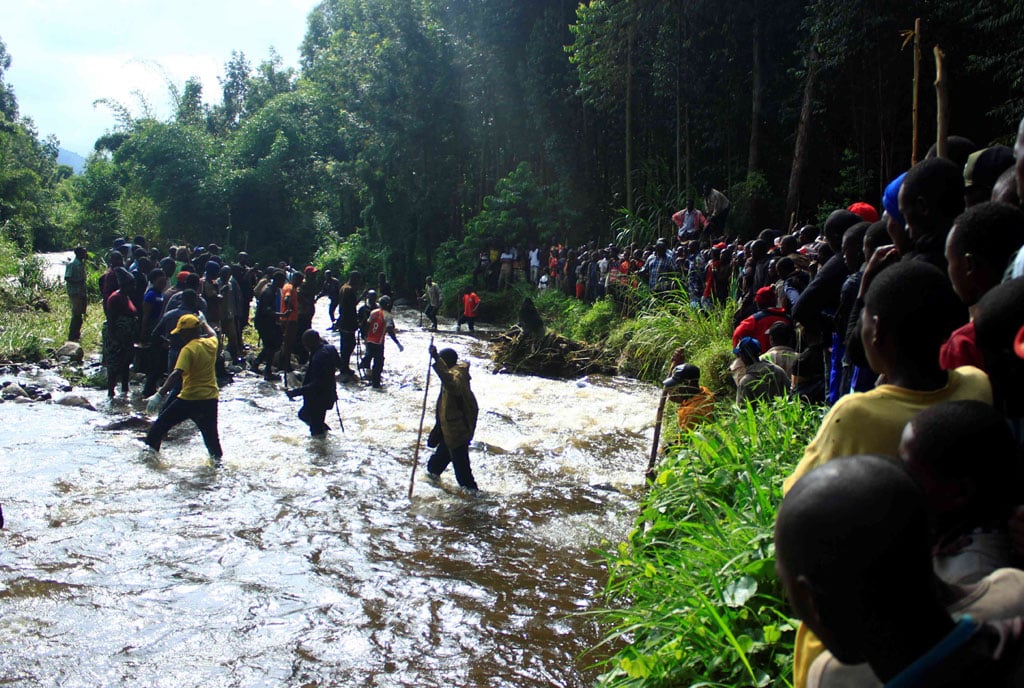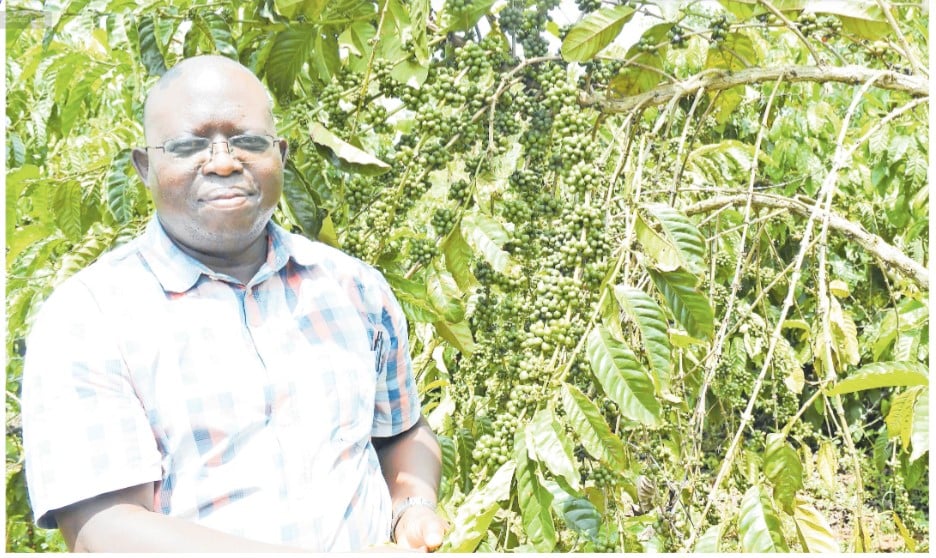
A section of Kilembe Mines in Kasese District. PHOTOS | ALEX ASHABA
Sarrai Group Ltd, which recently acquired Hima Cement from the French-Swiss building materials company, LafargeHolcim, has been evaluated as the best bidder for the redevelopment of the Kilembe Mines in southwestern Uganda, the Monitor can reveal.
Sarrai Group Ltd, sources close to the deal told this newspaper, was ranked first in the technical score with 81.2 percent, followed by a joint venture of M/s Linning Hongda Enterprises Group and Wagagai Mining Uganda Ltd with 73.3 percent, while the joint venture of Sinomine Resources Group Co Ltd and Power China International Group Ltd came in third place with 68.1 percent.
The three companies, sources indicated, have since been notified amid ‘grumbling’ of the best bidder being linked to top political circles. The bid process was co-supervised by the ministries of Finance and Energy.
Top ministry of Energy officials, however, defended that “every step has been evaluated/verified by” the Diverstiture Reform Investment Committee (DRIC), that is responsible for guiding on the privatisation and divestiture of state enterprises, under the Finance ministry.
Sarrai Group Ltd in November 2023 completed a $120m sales agreement to acquire Hima Cement from Holcim. Hima Cement previously belonged to the government trading as Uganda Cement Industries until privatisation in 1994. In 1999, Hima Cement was acquired by the French cement multinational, Larfage, which merged with Holcim in 2015.
Company registration documents detail that Sarrai Group Ltd was incorporated in 2017. Registration documents drawn by K&K Advocates (formerly Kiwanuka & Karugire Advocates) detail that the company is registered to Messrs. Sarbjit Singh Rai, RajBir Singh Rai, and Amaanraj Sing Rai, residents of Jinja.
In a March 28, 2024 resolution, following the acquisition of Hima Cement last November, on acquisition of a Shs3b credit facility from Stanbic Bank, the Sarrai Group Ltd directors described Hima cement, which already runs plant operations in Kasese, as a subsidiary.

Some people inspect rusted tanks inside the mines for copper in 2018.
The redevelopment of the Kilembe mines, sources added, encompasses three components; revival of the mines, construction of a power plant, and additional exploration of the copper/cobalt ore.
The DRIC went back to the drawing board to scout for a new developer following the government's months-long tight rope pulling and eventual termination of Tibet-Hima Mining Company Ltd (THMCO).
The company’s concession for Kilembe was officially terminated in June 2018 on orders of President Museveni and as per the recommendations of the winding-up commission, which was established to study the salient issues leading to THMCOL’s non-performance.
Unofficially, the company and its lobby went about pushing for a “pardon” but under revised terms, including seeking export of 30,000 metric tonnes of copper, cobalt, and gold as samples for testing in China.
Partly why THMCOL failed (and was bound to fail), one senior official familiar with the matter told Daily Monitor, said the company “naively” agreed to a number of government’s ambitious targets such as setting up a smelting plant even when such facility “clearly doesn’t make any business sense”.
“The mine had been abandoned for nearly 30 years and the government expected it to be turned around in less than five years. Isn’t that madness?” the official said.
President Museveni, in his gospel of wealth creation through value addition, has variously banned export of any mineral ore, and directed for it to be processed at home.
While appearing before the parliamentary Natural Resources Committee early last month, the State minister for Privatisation and Investment, Ms Evelyn Anite, confirmed that the government had terminated its relationship with THMCOL.
“It was unreasonable for the contractor to think we would allow such a significant amount of our natural resources to leave the country,” Ms Anite said.
Earlier in the year, the government announced that it had received 14 bidders, out of which four, Gingko Energy, Liaoning Hongda (Wagagai Mining), Sinomine Power China, and Sarrai Group, were selected to the next round.
While speaking at the 13th Mineral Wealth Conference early last month, Energy minister Ruth Nankabirwa hinted that signing of the Kilembe mines deal had been expected by November 1.
Sarrai Group Ltd, if announced winner, will enter into a joint venture with Kilembe Mines Ltd (KLM), the public limited company, which runs the mines and sells electricity in Kasese and Rubirizi districts.
During the 1970s production at Kilembe peaked at around 18,000 tonnes of copper cathode a year. However, the mines started falling apart following President Amin’s nationalisation policy that also saw most expatriate workers, especially Asians, flee.
The mines ceased operations in 1978 as a result of the political strife coupled with a steep fall in prices of the copper ore. From 1978 to 1982 the mine was placed under the care of KML.
In 1992, Kasese Cobalt Company Ltd, was also established to recover cobalt metals from an unstable stockpile of a cobalt-rich sulphide concentrate, and see if one of the units could be converted to smelt copper and other metals.
ABOUT KILEMBE MINES
The first recorded copper discovery in Uganda was by the Duke of Abruzz during an expedition to the Rwenzori Mountain in 1906. But the main commercial deposits were discovered in 1927 by D. Magee who was working for Tanganyika Concessions Ltd, which had been given a mineral prospecting licence covering an area of 9,360 square miles. The company started trenching on the northern side of Nyarusingye stream, but had its license reduced to 200sq miles in 1933. During this time, little work was done on the mines mainly because of the accessibility. The Mbarara-Kasese road was not built until 1939. This coupled with the low prices on the world market and the looming World War II had the company abandon the mines. Government fenced off 155sq miles around Kilembe to keep the deposits as it looked for another company to operate them. In 1942, rescue came in the form of Alderson, a Canadian who had developed the Macalder copper and gold mines in Kenya, who interested Frobisher Ltd, a Canadian mining company which formed a joint venture with Rio Tinto, a British mining giant. The two carried out preliminary investigations and started drilling in 1948 until 1951 with 10.5 mil[1]lion tonnes of ore discovered and another probable 4 million tonnes more. With ore of that magnitude discovered, it recommended in 1951 that a railway line be extended from Mityana to Kasese, where it reached in 1953.








